Mad Hedge Biotech and Healthcare Letter
March 20, 2025
Fiat Lux
Featured Trade:
(EVEN A PIG COULD MAKE MONEY HERE)
(OGN), (MRK), (RHHBY), (BAYRY), (PFE), (AZN)
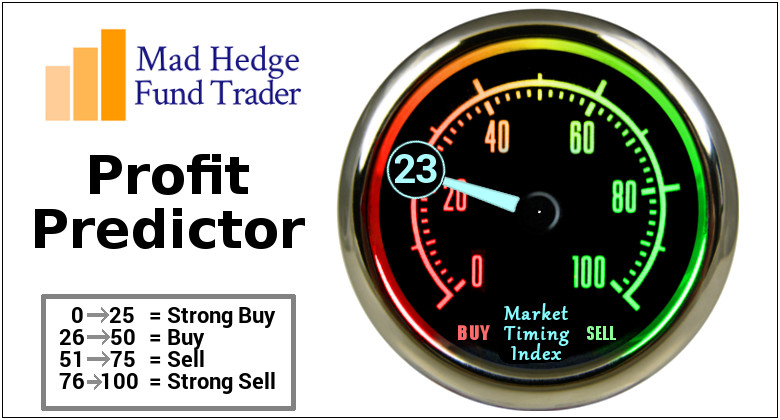
Mad Hedge Biotech and Healthcare Letter
March 20, 2025
Fiat Lux
Featured Trade:
(EVEN A PIG COULD MAKE MONEY HERE)
(OGN), (MRK), (RHHBY), (BAYRY), (PFE), (AZN)

I was camped out in Kyiv the other month when news of Organon's (OGN) earnings hit my phone.
While Russian drones buzzed overhead, I was studying pharmaceutical balance sheets—talk about surreal. Did I mention I've led a strange life?
In mid-February, Organon pleasantly surprised me with Q4 2024 results. Hadlima, their biosimilar to Humira, rocketed to $44 million in quarterly sales, up 83.3% year-on-year.
Meanwhile, Organon's dividend yield sits at a whopping 7.32%, blowing away the healthcare sector average.
Let me be blunt: this is an income investor's dream hiding in plain sight.
Organon emerged in 2021 when Merck (MRK) spun off its women's health, biosimilars, and off-patent drugs businesses. This allowed Merck to focus on its immunology and oncology pipeline while Organon became a pure-play commercial entity.
These spinoffs often create enormous value that the market misses in the early years.
Organon's share price has been trading sideways since early 2025 despite several wins: commercializing Hadlima, acquiring Dermavant, and maintaining a 23% operating margin even as some medications face generic competition.
The market clearly isn't paying attention. When stocks with this kind of dividend yield maintain solid margins, my antennae start twitching.
Their recent Phase 3 ADORING 3 study showed that even 79.8 days after stopping Vtama treatment, atopic dermatitis remained mild. That's patient retention gold, folks.
When patients can stop medication and still see benefits almost three months later, that's the kind of sticky customer base pharmaceutical execs dream about.
Revenue hit $1.59 billion in Q4 2024, down just 0.63% year-over-year but up 0.63% quarter-over-quarter.
Renflexis sales reached $64 million, down 16.9% due to competition from other Remicade biosimilars and superior new medications like AbbVie's (ABBV) Skyrizi.
But here's where things get interesting—this sales decline was expected and already priced in. Organon isn't being valued in Renflexis's future.
The real stars? Nexplanon and Vtama. Nexplanon sales reached $258 million in Q4, up 11.7% year-on-year.
Even better, its patent protection runs until August 2030. CEO Kevin Ali expects it to "comfortably get beyond $1 billion in 2025."
When a CEO uses words like "comfortably" about billion-dollar projections, I tend to listen.
Vtama, acquired in the $1.2 billion Dermavant purchase, brought in $12 million in partial Q4 sales.
The FDA expanded its label in December 2024 to include atopic dermatitis in patients over age 2—a condition affecting 31.6 million Americans. This approval significantly expands its market potential.
Remember, blockbuster drugs don't announce themselves with trumpets—they sneak up on you through expanded indications and growing prescriber bases.
Now, many folks will point to Organon's debt—$8.36 billion at 2024's end. But that's lazy analysis.
Look deeper and you'll see its net debt/EBITDA ratio improved from 5.01x to 4.74x over 12 months. They're steadily strengthening their financial position.
I've watched this happen before with pharma spin-offs—initial debt concerns gradually fade as strong cash flows tackle the balance sheet.
Management knows what they're doing. For 2025, they forecast a slight revenue dip but improved EBITDA margins of 31-32%, outperforming competitors like Perrigo, Alvotech, and Amneal.
In the broader pharmaceutical landscape, Organon competes with heavyweights like Roche (RHHBY), Ferring Pharmaceuticals, Bayer (BAYRY), Pfizer (PFE), and AstraZeneca (AZN)—but with a more specialized focus that gives them maneuverability these giants lack.
Wall Street's average price target is $20.50, suggesting a 33.9% upside. When was the last time you saw a 7.32% dividend yield with 33.9% upside potential?
I project non-GAAP EPS to reach $4.52 by 2029, slightly above analyst estimates, driven by Hadlima, Nexplanon, and Vtama growth, plus upcoming biosimilars HLX14 and HLX11. My friends at major healthcare funds are starting to take notice, but the broader market hasn't caught on yet.
At $15.31 per share, Organon trades at a non-GAAP P/E of 3.39x—80.8% below the sector median and 25.7% below its 5-year average. That's not just cheap—that's backing up the truck cheap.
You know what they say about bears and bulls making money, while pigs get slaughtered? Well, at these valuations, even a pig could make money on Organon.
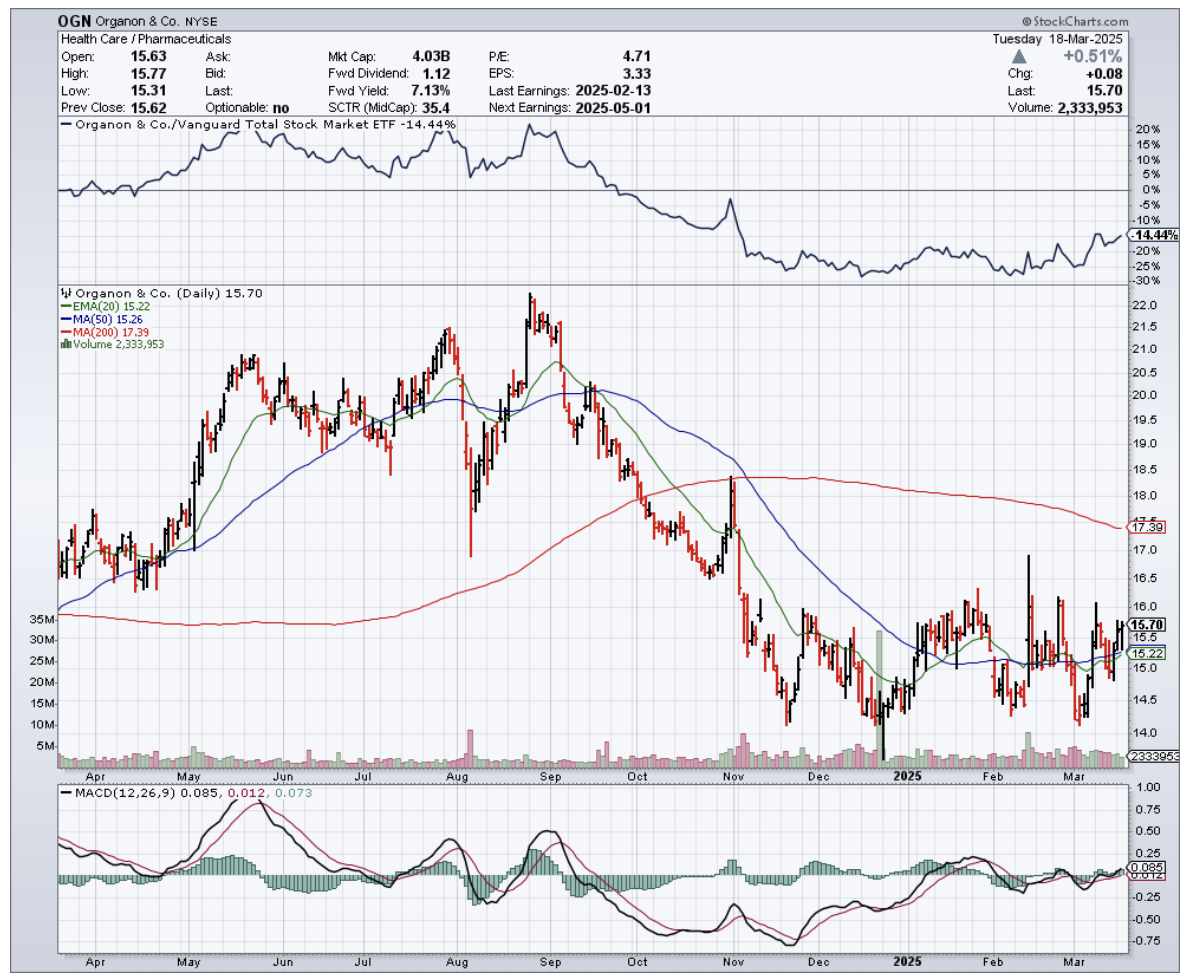
Mad Hedge Biotech and Healthcare Letter
August 29, 2024
Fiat Lux
Featured Trade:
(ONE TEST TO RULE THEM ALL)
(ILMN), (BAYRY), (LLY), (MRK), (BMY), (AZN), (RHHBY), (NVS), (GH), (TEM), (TMO)
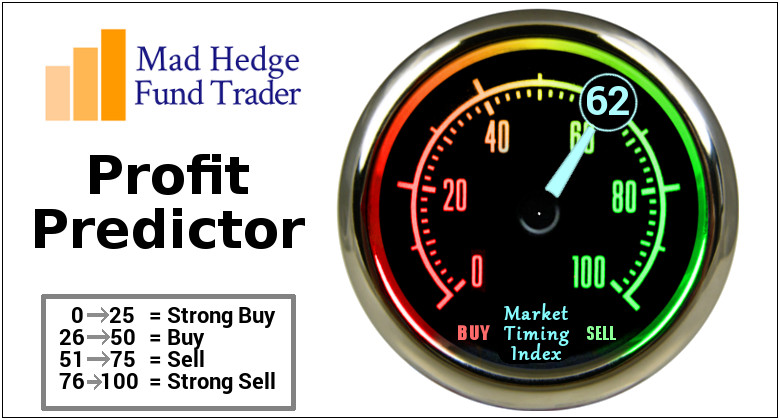
“One test to rule them all, one test to find them, one test to bring them all, and in the lab bind them,” the scientists at Illumina (ILMN) whispered – probably.
Their latest creation just got the FDA nod, and it's set to turn the world of cancer diagnostics on its head. It's as if Gandalf himself handed oncologists a palantír that reveals tumors' deepest secrets.
For those less versed in Middle-earth lore, this is like inventing a universal remote for tumor profiling, and oncologists can't wait to start channel surfing.
Now, you might be thinking, "What's the big deal?" Well, let me break it down for you.
This test, called TruSight Oncology Comprehensive (TSO for short), is the first FDA-approved genomic in vitro diagnostic kit that can make pan-cancer companion diagnostic claims.
In plain English, that means it's a single test that can be used across multiple cancer types. We're talking about a game-changer in precision oncology here.
Let's get into the nitty-gritty. This TSO test is a beast. It screens for a whopping 517 genes and provides comprehensive information on tumor mutational burden (TMB) and microsatellite instability (MSI).
These are crucial biomarkers that help determine how a patient might respond to immunotherapies. The breadth of data this single FDA-approved test can collect is unprecedented.
Now, you might be wondering, "Haven't we had companion diagnostics before?" Sure, but they've typically been limited to specific drugs or cancer types.
This pan-cancer test from Illumina is different. It can be applied to a wider range of solid tumors, and let me tell you, oncologists are loving it.
In fact, about 39% of U.S. oncologists have already said they strongly prefer using multi-gene panels over single-gene tests for guiding treatment decisions. That's a clear signal that there's demand for comprehensive diagnostic solutions like TSO.
Illumina's been busy across the pond, too. A version of this test has been available in Europe since 2022. But the U.S. version's got some new tricks up its sleeve.
It can help identify patients who might benefit from specific immunotherapies, including Bayer's (BAYRY) Vitrakvi and Eli Lilly's (LLY) Retevmo. The latter is a new addition compared to the EU version of the test.
Let's talk about these therapies for a second. Vitrakvi is used for adult and pediatric patients with certain NTRK mutations, regardless of their type of cancer. That's pretty cool, right?
But here's the kicker - these NTRK gene fusions are only found in about 0.1% to 0.3% of solid tumors, and they're tough to detect.
TSO's ability to scan both RNA and DNA means it can find multiple forms of this biomarker. That's a big deal for companies like Bayer, who've sometimes struggled to find eligible patients for this targeted therapy.
But Illumina's not resting on its laurels. They've got a growing pipeline of companion diagnostic claims in development, working hand in hand with drugmakers. They're planning to seek these in future regulatory submissions.
You see, Illumina's been playing the long game, forging partnerships with big pharma to co-develop companion diagnostics that align with targeted therapies.
Take their 2019 partnership with Merck (MRK), for instance. They teamed up to develop and commercialize a companion diagnostic using Illumina's TruSight Oncology 500 assay.
The goal? To identify genetic mutations in cancer patients that would respond to Merck's cancer drugs like Keytruda. This partnership boosted the adoption of Illumina's NGS platform in clinical oncology settings, contributing to both companies' growth.
The market liked what it saw at the time. Illumina's stock got a nice bump following the partnership announcement. And why wouldn't it?
The deal strengthened Illumina's position in the oncology diagnostics market, which is projected to grow at a CAGR of 12.4% from 2023 to 2030.
But Merck's not the only dance partner Illumina's got. They've also teamed up with Bristol-Myers Squibb (BMY) to use their TSO 500 assay as a companion diagnostic for immuno-oncology therapies.
This collaboration expanded Illumina's reach into new oncology applications, allowing BMY to use the TSO platform to identify patients most likely to benefit from its immune checkpoint inhibitors.
And there's more - Illumina's also forged partnerships with AstraZeneca (AZN), Roche (RHHBY), and Novartis (NVS) to develop companion diagnostic tests.
Next, let's talk numbers. Each new FDA-approved indication could potentially add $100 million to $200 million annually to Illumina's revenue. That's no chump change.
Unsurprisingly, Illumina's not the only player in this game.
Companies like Foundation Medicine (a Roche subsidiary), Guardant Health (GH), Tempus (TEM), Caris Life Sciences, Thermo Fisher Scientific (TMO), and GRAIL (another Illumina subsidiary) are all working towards pan-cancer or multi-cancer diagnostics.
Still, Illumina's TSO test is the first to secure FDA approval for pan-cancer companion diagnostic claims. This lead could translate into a significant market advantage.
Actually, Illumina already holds more than 70% market share in the global NGS market as of 2022. This means it’s well-positioned to benefit from this growth, and this latest FDA approval could further consolidate its market dominance.
Speaking of the FDA, they’ve been busy too. They've ramped up their support for precision medicine in recent years, approving a growing number of companion diagnostics and genomic tests.
From 2017 to 2021, they approved over 25 new companion diagnostics, a significant increase from the 5-10 approvals per year in the early 2010s. And a substantial portion of these approvals has been for oncology-related tests.
In 2021 alone, 68% of the FDA's new drug approvals were for cancer treatments.
Now, let's zoom out and look at the bigger picture. According to the World Health Organization, there were an estimated 19.3 million new cancer cases and 10 million cancer deaths worldwide in 2020.
The global cancer burden is expected to rise to 28.4 million cases by 2040, a 47% increase from 2020.
In the U.S., about 1.9 million new cancer cases are expected to be diagnosed in 2023.
The economic impact is also staggering. The economic burden of cancer in the U.S. was estimated at $157 billion in 2020, and it's projected to increase to over $246 billion by 2030.
These numbers stress the growing need for early detection and personalized treatment solutions.
But, unlike other companies, here's where advanced diagnostics like Illumina's TSO can make a difference. By ensuring patients receive the most effective treatments based on their genetic profiles, these tests can reduce unnecessary treatments and improve outcomes.
Studies have shown that using precision diagnostics can lower overall healthcare costs by 15% to 20% by avoiding ineffective therapies and hospitalizations.
Essentially, what we're seeing here is more than just a new test. It's a glimpse into the future of cancer treatment - more precise, more personalized, and potentially more effective.
For patients, it could mean better outcomes. For healthcare systems, it could mean more efficient use of resources. And for us? Well, it could mean significant opportunities in a rapidly growing market.
As Gandalf might say, "All we have to decide is what to do with the time that is given us." Illumina's chosen to use their time crafting this powerful new tool.
The quest to conquer cancer continues, and Illumina’s TSO might just be the ring-bearer we've been waiting for.
Keep your eyes peeled, fellow adventurers. The journey into precision oncology is only just beginning, and it promises to be an epic saga indeed.
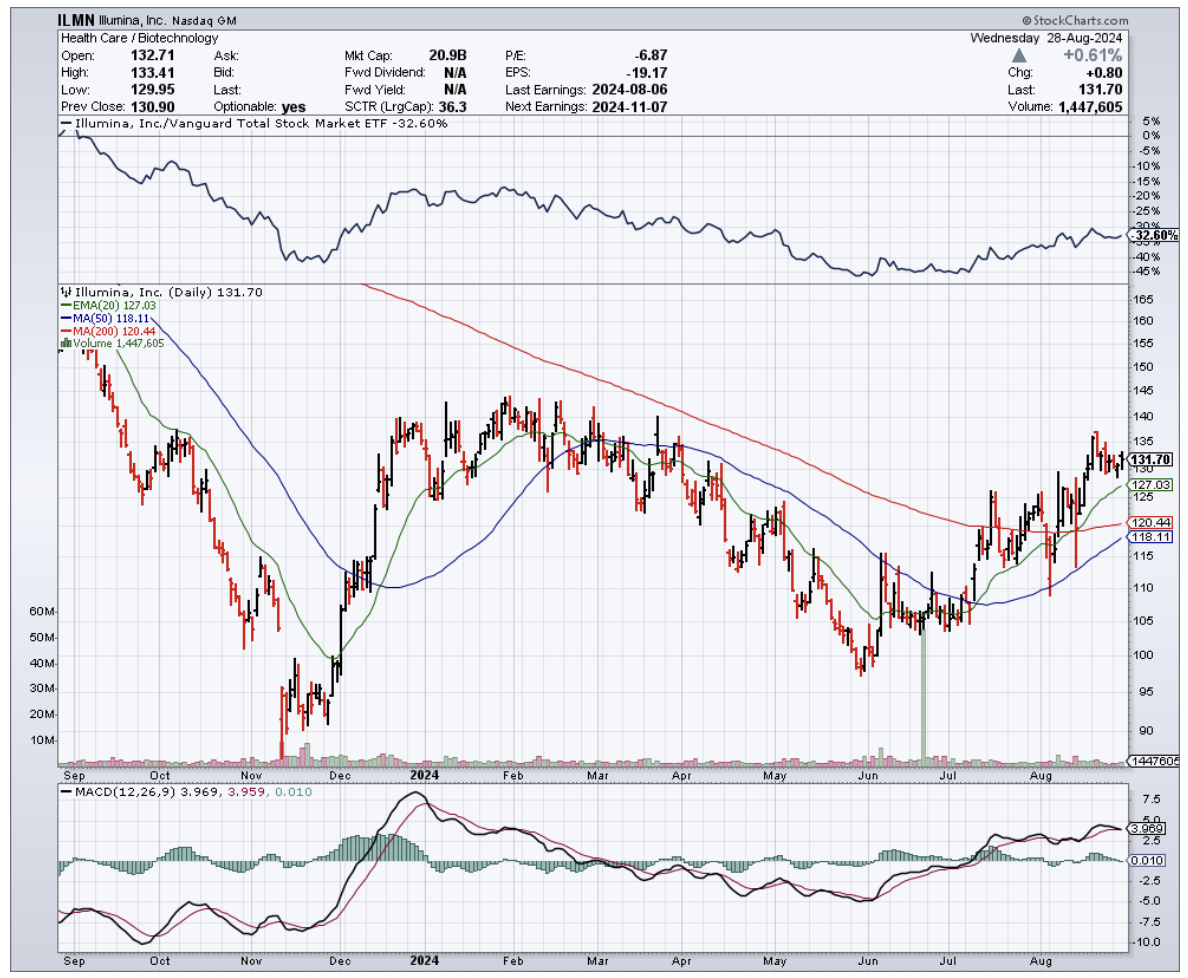
Mad Hedge Biotech and Healthcare Letter
January 9, 2024
Fiat Lux
Featured Trade:
(HATCHING THE GOLDEN EGG IN YOUR BIOTECH PORTFOLIO)
(CRSP), (VRTX), (BAYRY)

In the words of Louis Pasteur, “Chance favors the prepared mind.” This axiom holds especially true in the world of biotechnology, where preparation meets opportunity at the cutting edge of innovation.
It's in this dynamic arena that CRISPR Therapeutics (CRSP) stands out, exemplifying Pasteur's vision. Remember how we talked about finding that golden egg in your investment portfolio? Well, pay attention, because this biotech might just be it.
Let's rewind to 2023. That year was like a warm-up lap for CRISPR, with its shares jumping a whopping 54%.
Now, as we leap into 2024, CRISPR isn't just riding a wave; it's creating a tsunami of momentum. Picture a baseball pro stepping up in a World Series game. That’s CRISPR, swinging its groundbreaking gene-editing tech, starring their brainchild, Casgevy.
But let's not get lost in the jargon. We're talking about a field where diseases get a one-way ticket out of your system, thanks to advanced gene therapies.
Sure, we haven't seen everyone jumping on this bandwagon yet, but with the gene therapy market set to balloon to a cool $80 billion by 2029, it's like sitting on a biotech gold mine. And who's leading the charge? You guessed it - CRISPR Therapeutics.
Diving into their treasure chest, we find a cushy $1.75 billion in cash and a debt profile so lean, it could give fitness models a run for their money. In the world of biotech, CRISPR isn't just fit; it's doing financial gymnastics.
Now, let's gab about Casgevy. This isn't your everyday biotech gizmo. It's like finding a diamond in a sea of rhinestones.
Developed with Vertex Pharmaceuticals (VRTX), it's the first FDA and UK-approved bigwig using CRISPR-CAS9 tech. Designed as a once-in-a-lifetime fix for sickle-cell disease (SCD), it's also eyeing a spot in treating transfusion-dependent beta-thalassemia.
On top of that, the financial side of this story is as juicy as a ripe peach. Casgevy's price tag is a cool $2.2 million per treatment. Yes, you read that right. It's an exclusive club, with a reach estimated at 25,000-30,000 patients globally, mainly in the U.S.
The big question is: How many can actually afford this golden ticket? Considering the lifetime tab for SCD treatment hovers around $1.7 million, insurance companies might just get on board. The whole shebang – from prep to recovery – is a marathon, not a sprint.
But even with a modest guess of 10,000 patients getting treated, we're talking a revenue of $22 billion and a sweet $8.8 billion of that could waltz right into CRISPR's pockets.
But there's more to CRISPR than just Casgevy. They're playing 3D chess in a world where most are stuck playing checkers. Their lineup? It's like the Avengers of biotech – tackling everything from cancer with their “super soldier” CAR T-cells to diabetes and heart disease.
In the immuno-oncology corner, they're busy cooking up CTX112 and CTX131. These aren’t your average T-cells; they’re like tiny superheroes, souped up to target the baddies while giving your good cells a friendly nod. And the best part? CRISPR Therapeutics has the whole shebang under its wing.
Switching gears to Regenerative Medicine, imagine kicking those insulin shots to the curb. CRISPR's working on treatments that could reset your body’s natural functions. They've got VCTX210 and its beefier sibling VCTX211, both aiming to turn stem cells into insulin-producing champs.
Teaming up with ViaCyte, they've pocketed a nifty $100 million upfront, and there’s potentially more where that came from.
And then there's the In-Vivo stuff. This isn't your typical lab concoction; it's more like an internal bodyguard against heart diseases. With CTX310 and CTX320, CRISPR’s targeting pesky proteins that mess with your heart, proving they're not just a one-trick pony.
Oh, and let's not forget the buzz about their team-up with Bayer (BAYRY) on a hemophilia treatment. It's still cooking in the lab, but it's got the makings of something big.
For the investors rubbing their hands, wondering if CRISPR's stock is a wise pick – here’s my two cents. There’s still plenty of room for growth. It’s like uncovering an undervalued masterpiece at an art auction. The potential of CRISPR’s tech is just beginning to show its true colors.
So, what's my verdict? CRISPR Therapeutics isn't just a stock to buy; it's a golden ticket to the future of healthcare.
After all, in the end, it’s about betting on those who are not just playing the game but changing it entirely. And CRISPR? They're in a league of their own.
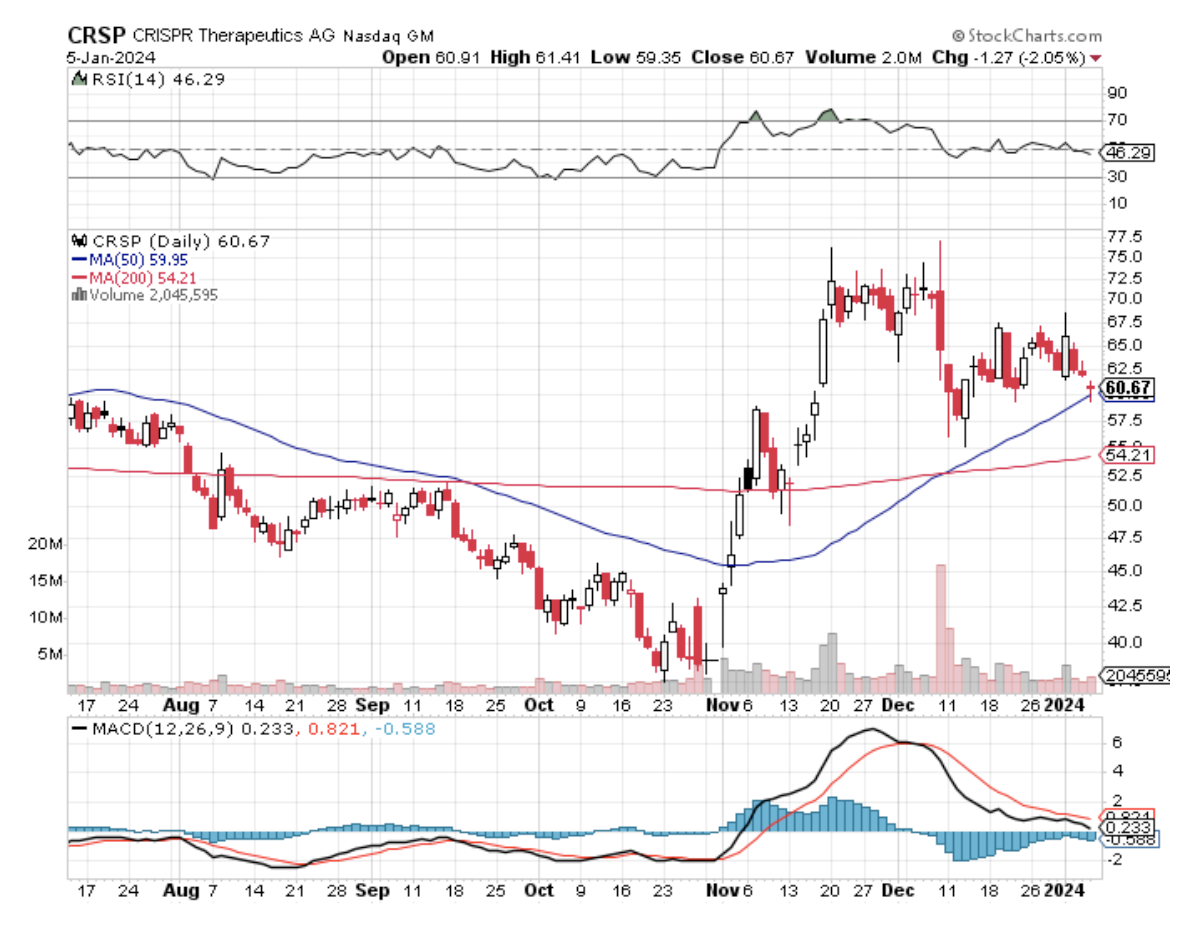
Mad Hedge Biotech and Healthcare Letter
September 13, 2022
Fiat Lux
Featured Trade:
(A CROWN JEWEL SCORES A GOAL)
(REGN), (BAYRY), (RHHBY), (SNY), (ALNY), (NTLA)
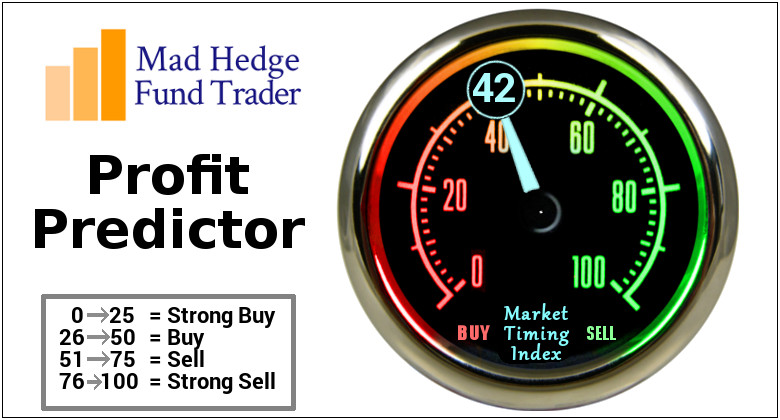
A stock with high margins offers a better buffer to face adversity and increased expenses.
Suppose a business’s revenue cost is substantial and leaves minimal room for the top line to maneuver and cover overhead and other operating fees. In that case, it can be challenging to stay in the black.
A recent example is Amazon (AMZN), which reports that its cost of sales typically comprises 80% or more of its revenue. When it struggled with the rising expenses in the past quarter, this e-commerce giant posted its first-ever loss in years.
Only a handful of companies manage to stick with this principle. In the biotechnology and healthcare sector, one business that doesn’t have this issue and enjoys gross profit margins of at least 80% or better is Regeneron Pharmaceuticals (REGN).
Regeneron was recently spotlighted following a significant 19.2% jump in its price, translating to a more than $12 billion rise in market capitalization.
The catalyst for this double-digit climb is none other than Regeneron’s crown jewel: Eylea.
The anti-blindness treatment, jointly developed with Bayer (BAYRY), delivered excellent results in two late-stage trials.
This is a huge deal because it supports the application of Eylea at higher doses and longer-lasting intervals.
Previously, Eylea was only permitted to be administered in 2 mg every 8 weeks. The recent trial results proved that the medication can be given at a higher concentration of 8 mg in a more extended period of 16 weeks and can still be effective at battling the disease. Plus, it shows a similar safety profile as the currently approved dosage.
This is a timely development for Eylea, which is set to lose its patent exclusivity soon, bringing anxiety to shareholders.
For context, Eylea accounts for $3.13 billion of Regeneron’s sales in the first 6 months of 2022. In the year's second quarter alone, it generated $2.49 billion in sales, recording a 9% year-over-year increase in its global profits.
In 2021, this eye medication reported $9.4 billion in sales worldwide.
These recent developments are eyed as potential solutions to Eylea’s impending franchise exclusivity loss as it attempts to eliminate a key overhang.
This move could slam the door shut on any talks or fears of potential copycats for at least a few years. It could also make it more competitive against rising competitors in the same space like Roche’s (RHHBY) Vabysmo.
The new data is expected to be used to defend the franchise from biosimilars, generic, and branded competitors. This is because patients are now offered an option for a treatment that needs fewer injections.
Most importantly, this could establish a firmer competitive moat for Regeneron and Bayer. After all, Eylea is projected to rake in more than $6 billion in sales in the US annually in 2023 and 2024.
Looking at their timeline and progress, the new Eylea dosage should be submitted for approval by the end of 2022 and launched by early 2023.
Other than Eylea, Regeneron has also been active in the oncology space.
Leveraging its roughly $6.2 billion sales from its COVID-19 treatment, Regeneron acquired several assets to expand its oncology segment.
Recently reported deals are its $900 million payment to Sanofi (SNY) to acquire non-small lung cancer drug Libtayo and the purchase of Checkmate Pharmaceuticals, which granted it access to promising melanoma candidates.
While these deals may not be as massive as other acquisitions in the industry, adding Libtayo and Checkmate Pharmaceuticals represent critical steps toward the right direction.
On top of these, Regeneron has existing partnerships and collaborations that would last for years. One is with Alnylam (ALNY), which involves treating liver cancer, ocular conditions, and diseases targeting the central nervous system.
Meanwhile, Regeneron expanded its deal with Intellia Therapeutics (NTLA) to give more rights to their in vivo therapeutic candidate developed via CRISPR/Cas9 gene-editing technology and additional targets, particularly for hemophilia A and B.
Overall, Regeneron has been proving to be a noteworthy investment in biotechnology and healthcare. At this point, though, the recent clinical trial results have been added to its share price.
While it isn’t exactly cheap, it’s not an outlandish valuation either. In short, I suggest that you wait and buy the dip.

Mad Hedge Biotech & Healthcare Letter
September 2, 2021
Fiat Lux
FEATURED TRADE:
(BIOTECHS ARE OUT FOR BLOOD)
(BIIB), (LLY), (BAYRY), (NVS), (SNY)
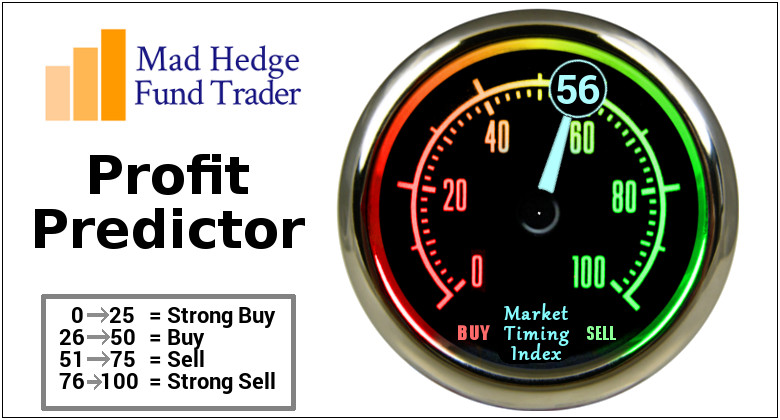
Tracing its origins in Greek mythology to the infamous Dracula tales, stories centered on the restorative powers of blood have captivated our imagination for millennia.
In the past two decades, however, the concept of hailing blood as the elixir of youth has come a long way from ancient folklore.
These days, this idea has reached the medical world with highly renowned researchers throwing their names behind the study of the regenerative ability of young blood.
From mere storybook fantasies, this concept has become one of the serious contenders alongside the likes of Biogen (BIIB), Eli Lilly (LLY), and Bayer (BAYRY) in the fight against Alzheimer’s, Parkinson’s, and even stroke.
Here’s a quick explanation for this change.
At its core, one of the major causes of aging is when our systems go on overdrive in the performance of usual bodily functions.
That is, the body shifts away from the “regular” state or homeostasis and instead is forced to constantly be in alert mode.
This causes us to end up with a hyper pro-inflammatory immune system, which then malfunctions and results in damaged tissues and organs over time, exposing the body to diseases and conditions like neurodegeneration and heart attacks.
The solution is quite simple. Let’s just flush out those pro-inflammatory aging compounds—aka the overworked system. That way, we can delay (or probably even prevent) the aging process.
This can be done through a process called “parabiosis,” which has only been experimented on mice.
Basically, this works by connecting the circulatory system of an older mouse to a younger one. Then, the older mouse starts to get younger as well.
In 2005, researchers published a paper that studied two identical mice (one old and one young) to demonstrate the veracity of the concept.
To test the idea, they connected the circulatory systems of both mice. This means that the two lived off the same general blood pool, which comprises young and old blood.
In just 5 weeks, the older mouse’s stem cells started to divide again. Its muscles and liver cells also began to repair themselves.
Essentially, from a cellular viewpoint, the older mouse transformed into a younger version of itself.
Given the medical, moral, and ethical issues that come with the traditional “parabiosis,” biotechnology companies have searched for more efficient and effective ways to achieve these age-defying results other than the vampiric blood swap.
But, how can these results be replicated?
This is where “Total Plasma Exchange” (TPE) comes in.
TPE is done using an apheresis machine. The patient’s blood runs through this device, which then removes and discards filtered plasma via the reinfusion of red blood cells as well as other replacement fluids, including plasma or albumin.
Without going through the technical nitty-gritty, TPE involves the extraction of a large volume of blood from a patient, taking it apart into its individual components, then returning it to the same patient’s body sans the filtered-out components courtesy of the machine.
Recently, clinical trials on humans showed that TPE managed to slow disease progression among patients suffering from age-related disorders, like Alzheimer’s, by more than 66%.
While there’s no uniform cost for this treatment, the average estimate for every TPE session is roughly $101,140. Just how much this would cost in the long run heavily depends on the person’s condition and desired outcome.
At this point, the research is still in its early stages.
However, this hasn’t prevented rogue biohackers from testing out their own theories—and come up with surprisingly workable results.
In 2020, two 50-year-old self-confessed “biohackers” based in Russia hooked themselves up to blood collection machines. They then proceeded to replace practically half of the plasma coursing through their own veins with salty water.
After 3 days, their blood tests showed an improvement in their general well-being, as seen in their hormones, fats, and other indicators.
In particular, their immunity, cholesterol metabolism, and even liver function showed better performance.
So far, this concept has been explored by other researchers who are now replacing plasma with saline and adding other components like albumin.
These experiments are still being conducted on animals, but they have to date proven to be promising in terms of reducing inflammation in the brain and improving cognitive functions.
Primarily, the Russian biohackers and these experts are diluting the anti-aging factors to slow down or even eventually prevent aging.
Among the probable applications of plasma in the anti-aging movement, the dilution process seems to be the easiest and most convenient track to pursue—so much so that a company, called IMYu, was founded by top UC Berkley researchers to develop this strategy further.
Thus far, only a handful of biotechs have focused on this concept.
Some of the frontrunners are Massachusetts-based Elevian, which was founded in 2017, and Alkahest, which was acquired by Spanish pharmaceutical giant Grifols (GRF) for $146 million.
Meanwhile, a company called Nugenics Research has actually patented the name “Elixir” for its plasma-derived product under development.
There are also clinics like the Atlantis Anti-Aging Institute based in Florida and companies such as Ambrosia, which market plasma gathered from donors ages 16 to 25 and sell them for several thousand dollars for every transfusion.
Thus far, big pharma has yet to get its hands on this technology.
Only a handful of major companies, including Novartis (NVS) and Sanofi (SNY), have expressed interest in exploring these possibilities.
However, these innovations are only a glimpse of the incredible momentum driving the anti-aging industry these days.
It’s only a matter of time until we achieve a spectacularly extended lifespan with an impressively high quality of health and wellbeing.
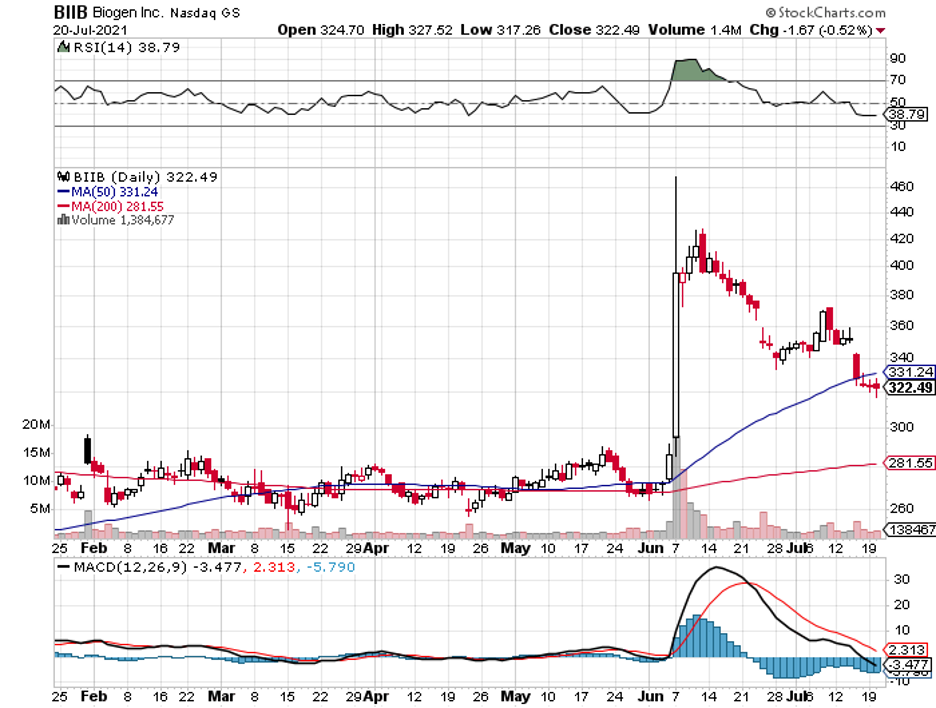
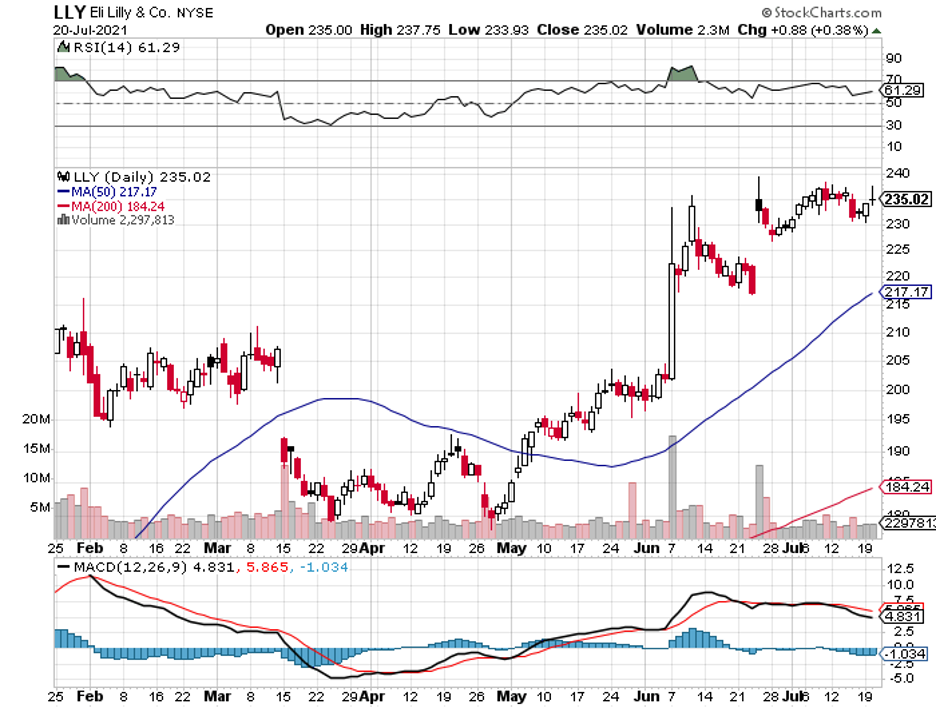
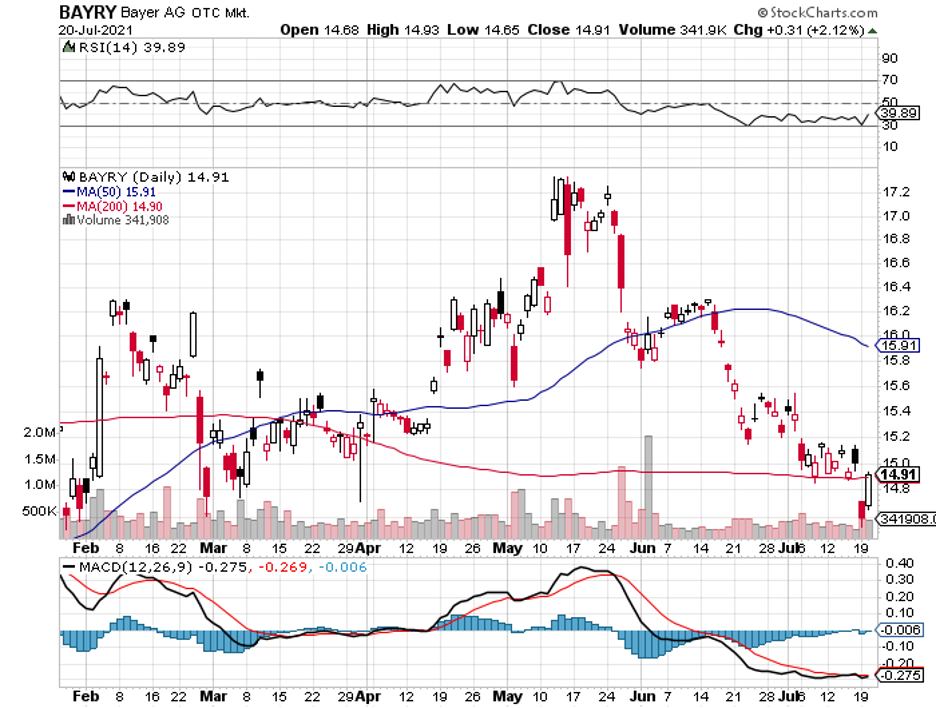
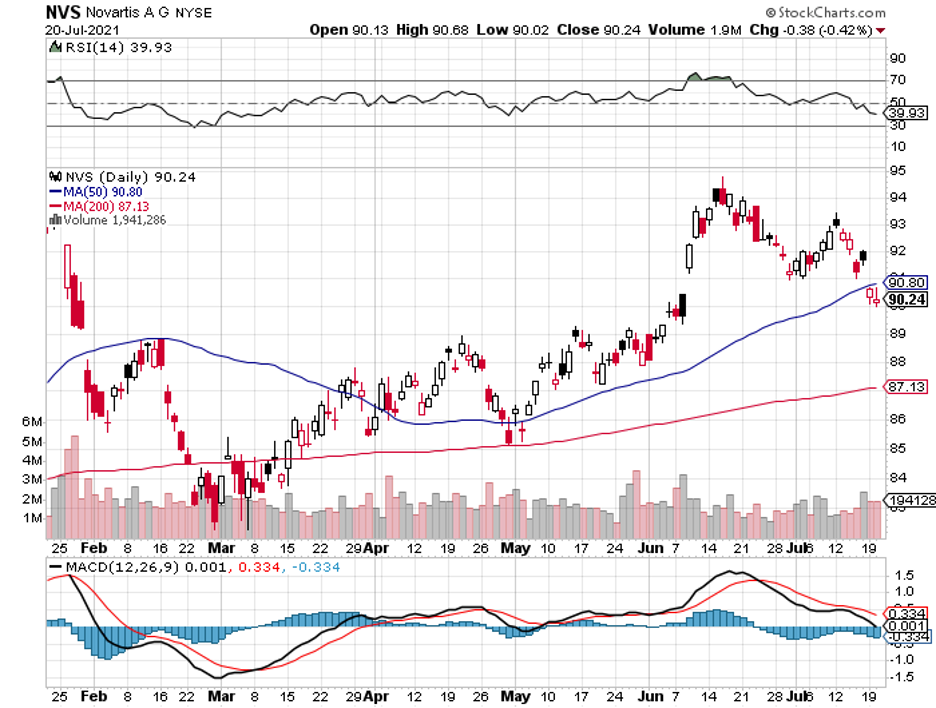
Legal Disclaimer
There is a very high degree of risk involved in trading. Past results are not indicative of future returns. MadHedgeFundTrader.com and all individuals affiliated with this site assume no responsibilities for your trading and investment results. The indicators, strategies, columns, articles and all other features are for educational purposes only and should not be construed as investment advice. Information for futures trading observations are obtained from sources believed to be reliable, but we do not warrant its completeness or accuracy, or warrant any results from the use of the information. Your use of the trading observations is entirely at your own risk and it is your sole responsibility to evaluate the accuracy, completeness and usefulness of the information. You must assess the risk of any trade with your broker and make your own independent decisions regarding any securities mentioned herein. Affiliates of MadHedgeFundTrader.com may have a position or effect transactions in the securities described herein (or options thereon) and/or otherwise employ trading strategies that may be consistent or inconsistent with the provided strategies.
This site uses cookies. By continuing to browse the site, you are agreeing to our use of cookies.
OKLearn moreWe may request cookies to be set on your device. We use cookies to let us know when you visit our websites, how you interact with us, to enrich your user experience, and to customize your relationship with our website.
Click on the different category headings to find out more. You can also change some of your preferences. Note that blocking some types of cookies may impact your experience on our websites and the services we are able to offer.
These cookies are strictly necessary to provide you with services available through our website and to use some of its features.
Because these cookies are strictly necessary to deliver the website, refuseing them will have impact how our site functions. You always can block or delete cookies by changing your browser settings and force blocking all cookies on this website. But this will always prompt you to accept/refuse cookies when revisiting our site.
We fully respect if you want to refuse cookies but to avoid asking you again and again kindly allow us to store a cookie for that. You are free to opt out any time or opt in for other cookies to get a better experience. If you refuse cookies we will remove all set cookies in our domain.
We provide you with a list of stored cookies on your computer in our domain so you can check what we stored. Due to security reasons we are not able to show or modify cookies from other domains. You can check these in your browser security settings.
These cookies collect information that is used either in aggregate form to help us understand how our website is being used or how effective our marketing campaigns are, or to help us customize our website and application for you in order to enhance your experience.
If you do not want that we track your visist to our site you can disable tracking in your browser here:
We also use different external services like Google Webfonts, Google Maps, and external Video providers. Since these providers may collect personal data like your IP address we allow you to block them here. Please be aware that this might heavily reduce the functionality and appearance of our site. Changes will take effect once you reload the page.
Google Webfont Settings:
Google Map Settings:
Vimeo and Youtube video embeds:
